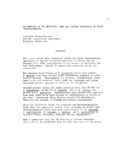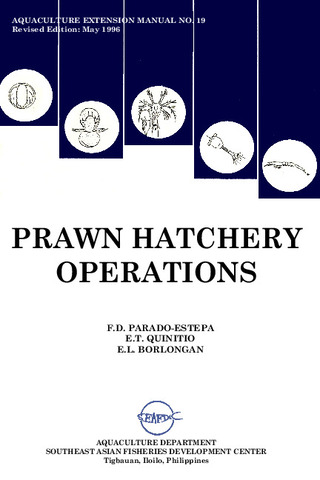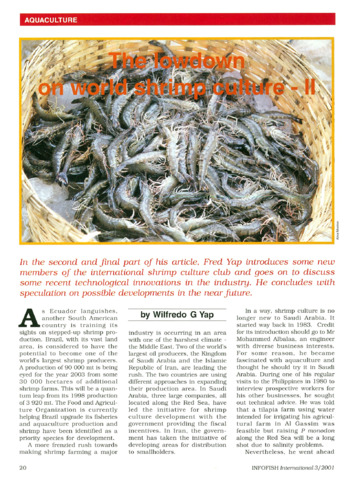Mass production of Penaeus monodon Fabricius juveniles in earthen nursery ponds
- Global styles
- MLA
- Vancouver
- Elsevier - Harvard
- APA
- Help

Date
1979Page views
7,737ASFA keyword
AGROVOC keyword
Taxonomic term
Metadata
Show full item record
Share
Abstract
Different culture techniques were tried for rearing larvae of Penaeus monodon , in order to obtain preliminary data on stocking density, water management, fertilization versus feeding and effect of different types of vertical substrate. The results of the experiments showed that: (1) older fry have greater chances of survival; (2) the traditional nursery pond designs and practices used for milkfish in the Philippines are applicable to prawn only at very low densities and give acceptable high survival rates only when used with the older postlarval stage.
Suggested Citation
Apud, F., Yap, W., & Gonzales, K. (1979). Mass production of Penaeus monodon Fabricius juveniles in earthen nursery ponds. SEAFDEC Aquaculture Department Quarterly Research Report , 3(1), 7-11. http://hdl.handle.net/10862/2339
Type
ArticleCollections
Related items
Showing items related by title, author, creator and subject.
-
An overview of the nutrition, feed and feeding techniques of prawn penaeid/shrimps
Piedad-Pascual, Felicitas (Philippine Council for Aquatic and Marine Research and Development, 1989)This paper echoes what transpired during the first International Conference of Penaeid Prawns/Shrimps held in Iloilo City in December 4-7, 1984, particularly on the Nutrition nd Feed Development. Around 25 papers were ... -
Series: Aquaculture extension manual; No. 19
Prawn hatchery operations
Parado-Estepa, Fe D.; Quinitio, Emilia T. ; Borlongan, Emeterio L. (Aquaculture Department, Southeast Asian Fisheries Development Center, 1996-05)
The manual, an updated version of the 1984 SEAFDEC/AQD manual, presents the underlying principles and step-by-step instructions of prawn larval and post-larval rearing. The techniques described are not only applicable to ...
; Borlongan, Emeterio L. (Aquaculture Department, Southeast Asian Fisheries Development Center, 1996-05)
The manual, an updated version of the 1984 SEAFDEC/AQD manual, presents the underlying principles and step-by-step instructions of prawn larval and post-larval rearing. The techniques described are not only applicable to ... -
The lowdown on world shrimp culture - II
Yap, Wilfredo G. (INFOFISH, 2001)This paper introduces some new members of the international shrimp culture club and goes on to discuss some recent technological innovations in the industry, particularly the polyculture of tilapia (mainly Oreochromis ...






